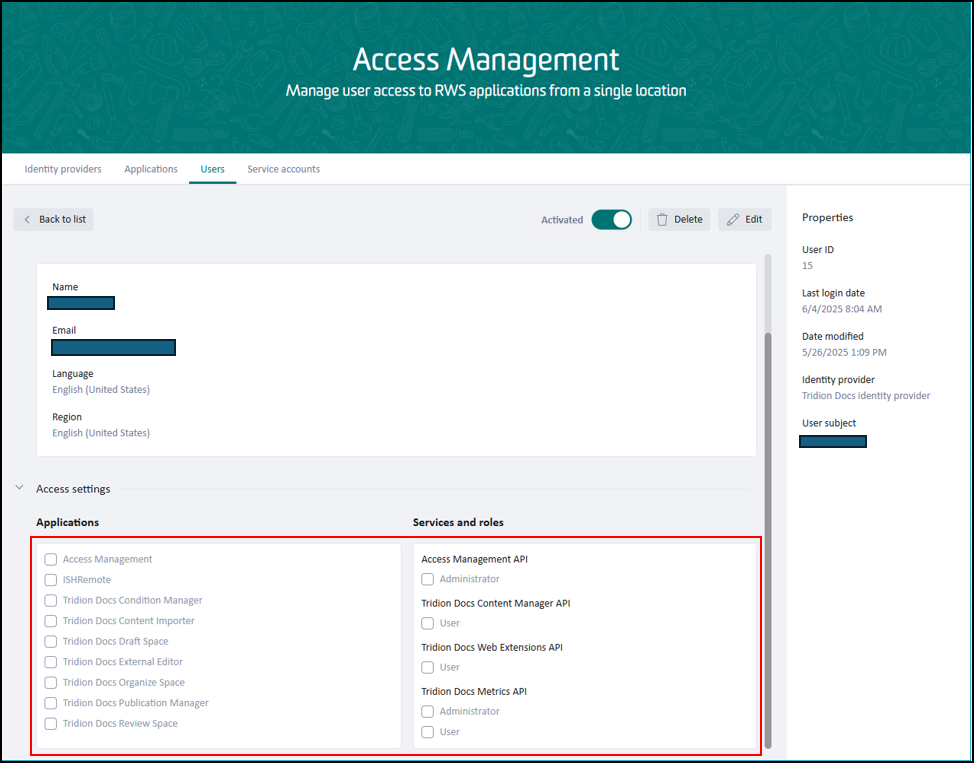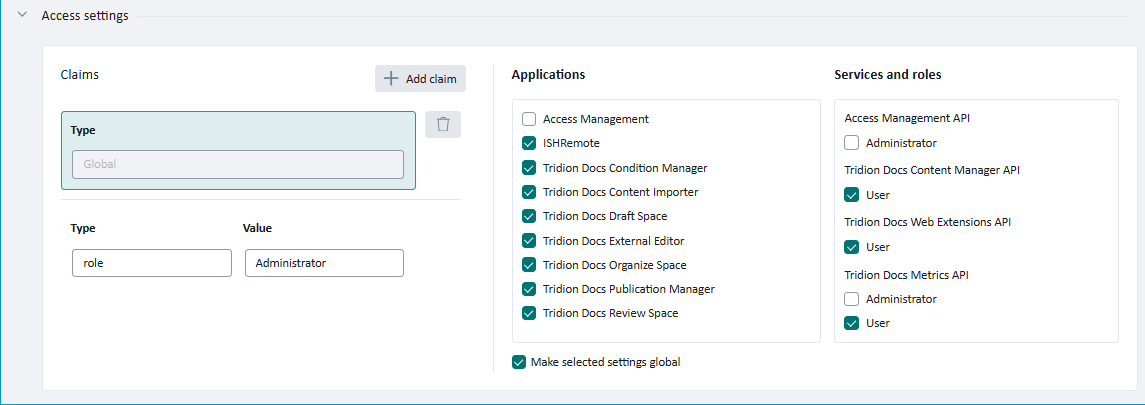I'm evaluating Tridion Docs 15.1.2 and have a question regarding Access Management.
I'd like to know the purpose of access settings in Access Management. When a new user account is registered with any identity provider, the checkboxes for all access settings become unchecked. Even so, the newly added user can use Publication Manager and Organize Space. How do the access settings affect the Tridion Docs operation?

Generated Image Alt-Text
[edited by: RWS Community AI at 7:30 AM (GMT 1) on 26 Jun 2025]


 Translate
Translate


